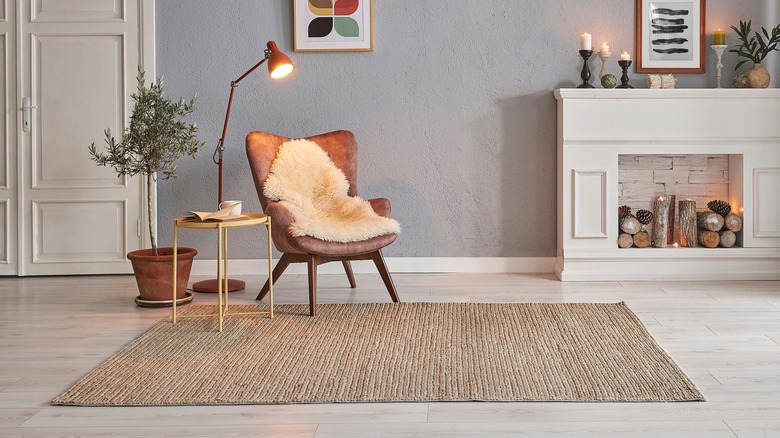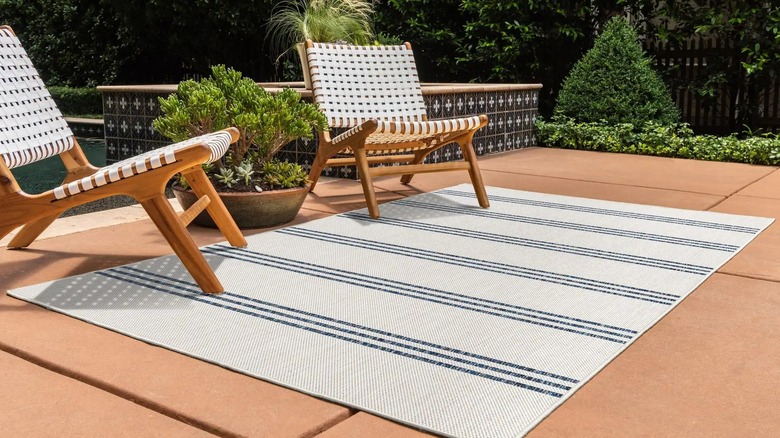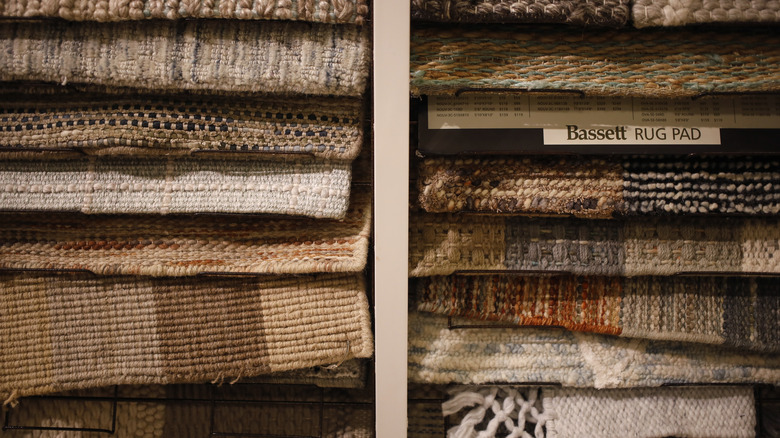What Is Olefin Carpet And Is It Right For Your Space?
Good carpets make a space look cozy, comfortable, and warm while hopefully protecting your flooring with sought-after features like stain resistance, moisture resistance, and high resilience. Nylon and polyester are some of the most common synthetic fabrics used in carpets, offering various colors and styles for people to choose from. However, other options like Olefin use non-natural materials while keeping looks and costs in mind when decorating a space.
What's Olefin? It may sound exotic, but Olefin is a more straightforward way to refer to polypropylene fiber, a synthetic fabric commonly used in the carpet industry. Olefin carpets are not uncommon, though. Due to its wool-like appearance, it's a popular material often found in Berber carpets, area rugs, and outdoor areas and is a trendy choice, second only to nylon. Continue reading to learn more about olefin carpets, their pros, and cons, and if they're right for your space.
What are the advantages of olefin carpets?
Besides looking good, olefin carpets are water-resistant and the perfect rug for your outdoor space. The material has a natural ability to wick moisture away from its surface. Albemarle Carpet says that "olefin only absorbs one-tenth of 1% of its weight in water." This is the primary reason for its popularity and its main use as a floor covering in moisture-prone areas. Olefin carpets are also popular due to their stain and color-fade resistance. They're dyed during production, as opposed to most carpets, and will repel most water-soluble substances. The rugs can be bleached without changing or losing their color.
They're also affordable. Family Handyman says olefin carpets are cheaper than their counterparts, ringing up at, on average, about $1.50 per square foot, while nylon will set you back between $3.25 and $7.50 for the same amount. On top of that, Olefin is static-free and lightweight and is the only carpet that can aptly float on water.
Is Olefin carpet right for your space?
While olefin is stain-resistant, it's also oleophilic, meaning it attracts oil which can lead it to retain dirt and grime and losing its color and look. Consider the maintenance issues this brings to the table before committing. Olefin carpets are not the most durable in the market, either, surpassed by their Nylon and Polyester counterparts regarding matting resistance. They're also sensitive to heat and friction, which doesn't work well in crowded areas. According to Family Handyman, it takes minimal heat to burn an olefin carpet, and simple movements like moving furniture across can create burn or scorch marks.
Considering their unique features, olefin carpets can be perfect for basement floors, poolside patios, and other outside areas that could dampen quickly due to the carpet's water resistance. Because of their static-free nature, they're also excellent for computer rooms. On the other hand, it's better to avoid their usage in the kitchen or the dining room due to their sensitivity to oily residue. If you're looking for a carpet that looks good in a highly moist environment and won't break the bank, olefin might be the material you're looking for.


